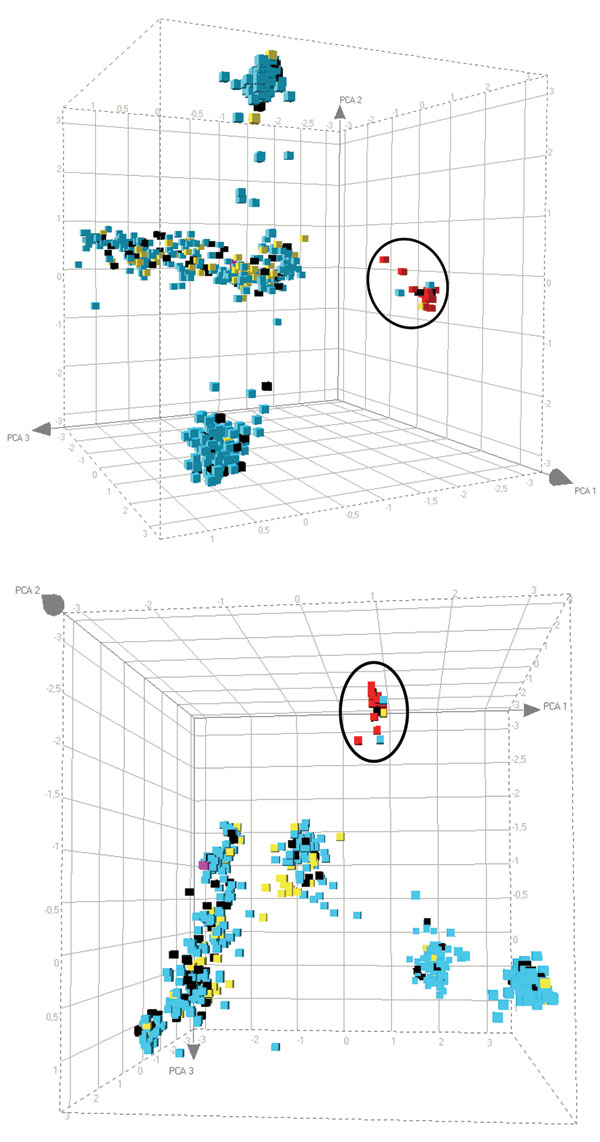Methicillin-Resistant and -Susceptible Staphylococcus aureus Sequence Type 398 in Pigs and Humans
Alex van Belkum*, Damian C. Melles*

, Justine K. Peeters*, Willem B. van Leeuwen*, Engeline van Duijkeren†, Xander W. Huijsdens‡, Emile Spalburg‡, Albert J. de Neeling‡, Henri A. Verbrugh*, on behalf of the Dutch Working Party on Surveillance Research of MRSA (SOM)
Author affiliations: *University Medical Center Rotterdam, Rotterdam, the Netherlands; †University of Utrecht, Utrecht, the Netherlands; ‡National Institute for Public Health and the Environment (RIVM), Bilthoven, the Netherlands; 1Members of SOM: A. van Belkum, M. Bonten, M. van den Broek, J. Degener, E. van Duijkeren, A. van de Giessen, X.W. Huijsdens, J.A.J.W. Kluytmans, B. ter Kuile, I. van Loo, D. Mevius, A.J. de Neeling, R. van Oosterom, E. Stobberingh, E.W. Tiemersma, H.A. Verbrugh, A. Voss, J.A. Wagenaar, and P. van der Wolf;
Main Article
Figure 2

Figure 2. Principal component analysis analysis of the amplified fragment length polymorphism data obtained for the pig-associated methicillin-resistant Staphylococcus aureus sequence type 398 (ST398 MRSA) and its closely related methicillin-susceptible S. aureus (MSSA) strains, carriage MSSA isolates from healthy children and elderly persons, invasive MSSA from hospitalized children and elderly persons, and invasive animal S. aureus isolates (including 2 MRSA isolates). The cubes, plotted in 3-dimensional space, represent all of the strains displayed in Figure 1, panel A. Each axis represents the score calculated for that strain on each principal component. The distribution is shown from 2 different angles. ST398 strains are circled. Blue, carriage isolates (n = 829); black, bacteremia isolates (n = 146); yellow, animal isolates (n = 77); red, ST398 MRSA isolates (n = 46); pink, reference strains (Mu50/N315).
Main Article
Page created: July 07, 2010
Page updated: July 07, 2010
Page reviewed: July 07, 2010
The conclusions, findings, and opinions expressed by authors contributing to this journal do not necessarily reflect the official position of the U.S. Department of Health and Human Services, the Public Health Service, the Centers for Disease Control and Prevention, or the authors' affiliated institutions. Use of trade names is for identification only and does not imply endorsement by any of the groups named above.
